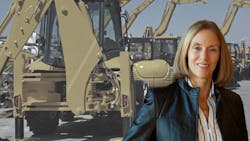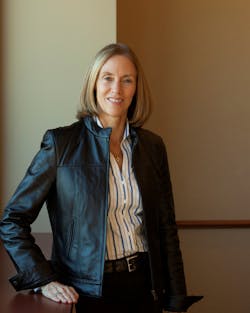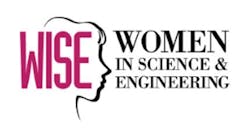Lead Problem-Solver: Tana Utley Signs Off on Big Projects
The expression “hindsight is 20/20” is sometimes used to describe our perspective on what could have been done differently. For Tana Utley, a look back over a 36-year engineering career at Caterpillar Inc. reveals instead that, as a budding engineer, foresight and pragmatism were two traits that would unapologetically scaffold her career with the world’s largest construction-equipment manufacturer.
At first, Utley didn’t really want to work for Caterpillar. Back in the 1980s the company was riddled with strife for the hourly workforce. “It was always in the local news for some kind of labor dispute” and that stigma had limited appeal, she said.
Before graduating with a mechanical engineering degree from Bradley University, Utley had already completed internships at an aerospace company and the plan was to strike out on her own after graduating. But her father had worked at Caterpillar, and a hard look at the scope of opportunity in the industry provided a reality check. “Caterpillar was nationally competitive for their wages,” Utley recalled. “The work was very interesting, and it was here in Peoria, Ill., where I had a network. I was getting ready to start a family and that was important to me. So, I found it to be compelling, and I’m glad I made that decision.”
Caterpillar’s college graduate training program provided reinforcement. “I had an opportunity to spend 15 months rotating to various job stands for six weeks around the company and learned that I really enjoyed the engine area,” said Utley.
Becoming an Engine Person
Around 2014, the United States Environmental Protection Agency promulgated laws that required engine manufacturers to produce new engines to help bring engine emissions to near zero levels, recalled Utley, who was at the time starting her role leading Caterpillar’s engine division. “As mechanical engineers, we really grew up learning about and exploring what made engine emissions and how to reduce them,” said Utley.
The EPA became her division’s most demanding customer because even though the government did not buy the engines, their demands had to be met. “We had real customers who use our equipment to make money, so we had to find a way to embrace the standards,” she explained. Striving to strike a balance, her team would answer one question: “How do we reduce emissions on a timetable and provide customer value?”
The solution, according to Utley, was to add technology. “Sometimes you’ll do something to reduce one of the emissions constituents—say, particulate,” she said. “This might actually increase the other constituent—say, NOx. That may also have a detrimental impact on something else the customer cares about. The only way to solve that puzzle is to introduce new technologies to the engine. So, we did that with each one of the successive four years emissions reductions.” Over the course of Utley’s career, she estimated that regulated constituents or emissions were reduced by 96%.
Competency Fosters Leadership
If asked to describe something that stood out as “revolutionary,” Utley would point out that the term implies that there is innovation both in the architecture of how a machine is put together, as well as in the technology elements. Revolutionary technologies, according to Utley, come about because of a series of evolutions, and electrification is one example.
Ensuring that the company is investing in technologies and commercializing those that will fuel customer value and company success could be every leader’s goal. Utley found that this competency was tested with each new role as she went on to serve as director of the Engine Design, Large Engine Products & Fuel Systems Division, as well as lead the Electronic & Electrical Systems business unit in Caterpillar’s Motion and Power Control Division. “Engineers are problem-solvers, and I am no exception,” said Utley, who was prepared to take ownership and make critical decisions.
This mindset is conceivably what undergirds Utley’s penchant for not only acquiring technical competence in the field of diesel engines, but also taking on the role of lead problem solver in consequent appointments. The game plan for getting through the first 90 days in each role, she said, consisted of figuring out what the problems were that needed to be solved, determining how to solve it and then working toward a vision with the end in mind.
What follows from this, she said, is to ask: “How are we going to write that book?” At Caterpillar, that usually meant a book of continuous improvement and solving the problems one chapter at a time. “The idea was never to try and push the organization through some kind of dramatic change it’s not ready for,” Utley said.
The Trust Formula
A leader intent on making the biggest difference in their company needs to be able to have big challenges or big problems to solve, pointed out Utley. “If you want to be awarded the big problems to solve, your boss or management needs to feel comfortable giving you those projects,” she said.
And if “trust” is a significant determinant of success, Utley leaned in to the principle that trust can be earned. To do so, she said, one needs to be competent (“It’s table stakes”), intimate with people (“You want to be relatable and easy to do business with”) and balance these variables against the perceived risk. “The higher the risk of the project, the more trust your boss has to have in you,” said Utley. “And you need to be even more competent and closer to the organization in order to make that trust balance with the risk.”
For Utley, the level of risk decreased with each new project she tackled, starting from the early days in 1996, when Utley worked as a lead engineer to launching the C10 and C12 engines, to rising through more strategic roles and working with other Caterpillar leaders to create and execute the enterprise technology strategy, including the D7E track-type tractor with electric drive and autonomous truck program.
What’s Left Behind
Finding success in pivoting from an engineering role to a senior leadership role requires that “you keep that knife sharp and keep current in your field,” said Utley.
Add to this her take on harnessing leadership skills from engineering knowledge. “Engineers are really well-positioned to be business leaders if they’re willing to learn about business,” said Utley. “We can look at the world as a series of problems to be solved. And that’s exactly what business is. It is a series of problems to be solved.”
Still, success is rarely centered on leadership alone, and Utley maintained it is imperative is to bring the people in your division along with you. “The people in the business make the business, so you need to make sure that you’re taking care of them,” advised Utley. “Abiding by the ‘leaders eat last’ mantra is particularly important. And always, always say thank you.”
Leaving a legacy of competent people who were pulling in the same direction in building the divisions Utley led may very well be her mark of influence. When asked what makes her proud, she replied, "I'd have to say, making the division I ran a good place to work and leaving a legacy of good products—products that helped our customers make more money than they would have if they bought the competitor's products,” she said. “And I would say, leaving behind a culture of excellence.”
Editor’s Note: Power & Motion's Women in Science and Engineering (WISE) hub compiles our coverage of gender representation issues affecting the engineering field, in addition to contributions from equity seeking groups and subject matter experts within various subdisciplines.
About the Author
Rehana Begg
Senior Editor, Machine Design and Hydraulics & Pneumatics

Leaders relevant to this article:


